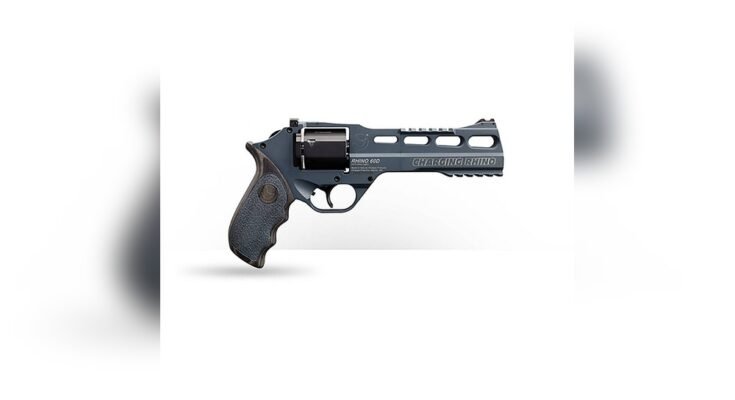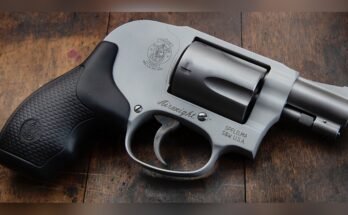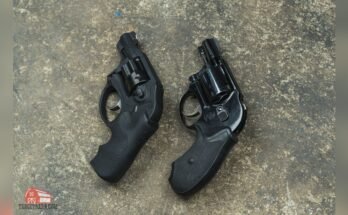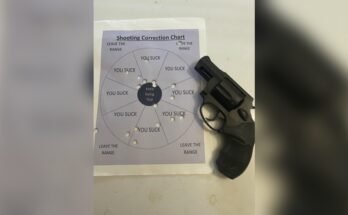If you own a double-action revolver, keeping it in top shape is essential for safety and reliability. But how do you maintain such a firearm properly?
You might think it’s complicated or time-consuming, but with the right steps, you can easily keep your revolver clean and working smoothly. You’ll discover simple yet effective tips to care for your double-action revolver. Whether you’re a beginner or have some experience, these insights will help you protect your investment and be ready whenever you need it.
Keep reading to learn how to maintain your revolver like a pro.
Basic Parts Of A Double-action Revolver
A double-action revolver has several key parts. Each part plays a role in how the gun works and how you keep it clean and safe. Knowing these parts helps in proper care and maintenance. Here are the basic parts of a double-action revolver you need to know.
Frame And Barrel
The frame is the main body of the revolver. It holds all other parts together. The barrel is attached to the frame. It guides the bullet when fired. The frame and barrel must be clean and free from rust. Dirt or damage here can affect accuracy and safety.
Cylinder And Hammer
The cylinder holds the bullets. It rotates as you pull the trigger. This rotation lines up each bullet with the barrel. The hammer strikes the firing pin to ignite the bullet. Both parts must move smoothly. Dirt or buildup can cause jams or misfires.
Trigger Mechanism
The trigger controls the firing of the revolver. Pulling it rotates the cylinder and releases the hammer. The trigger mechanism includes springs and small parts. These parts need regular cleaning and oiling. A sticky trigger can cause problems when shooting.

Essential Cleaning Tools
Maintaining a double-action revolver needs the right tools. These tools clean and protect the gun. They help keep the revolver working well and last longer. Using the proper cleaning tools makes the process easier and safer. Below are the key tools you need for cleaning your double-action revolver.
Cleaning Rods And Brushes
Cleaning rods reach inside the barrel to remove dirt and residue. Use rods that match the barrel size for best results. Brushes scrub the barrel and cylinder chambers. Brass or nylon brushes work well without damaging the metal. Clean each part carefully to avoid buildup that can harm accuracy.
Solvents And Lubricants
Solvents dissolve powder, lead, and carbon inside the revolver. Choose a solvent made for firearms to avoid damage. After cleaning, apply lubricant to moving parts. Lubricants reduce friction and prevent rust. Use a small amount to keep the action smooth and reliable.
Protective Gear
Wear gloves to protect your hands from chemicals. Safety glasses shield your eyes from splashes. Use a well-ventilated area to avoid inhaling fumes. Protective gear keeps you safe while cleaning your revolver.
Step-by-step Cleaning Process
Maintaining a double-action revolver keeps it working safely and smoothly. Cleaning helps remove dirt, powder residue, and oil build-up. A clean revolver lasts longer and shoots better. Follow these simple steps to clean your gun well.
Unloading And Safety Check
First, make sure the revolver is unloaded. Open the cylinder and remove all bullets. Check the chambers carefully with a light if needed. Point the gun in a safe direction during this step. Never skip this safety check before cleaning.
Cleaning The Barrel And Cylinder
Use a cleaning rod and brush to scrub inside the barrel. Push the brush through several times to remove residue. Clean each chamber of the cylinder the same way. Use a cleaning patch soaked with solvent to wipe the barrel. Repeat until patches come out clean. This step removes powder and metal fouling.
Lubricating Moving Parts
Apply a small amount of gun oil on the moving parts. Focus on the cylinder crane, trigger, and hammer pivot points. Use a cloth to spread the oil evenly without excess. Lubrication reduces friction and prevents rust. Avoid over-oiling, as too much can attract dirt.
Common Maintenance Mistakes
Maintaining a double-action revolver requires care and attention. Mistakes during upkeep can lead to damage or poor performance. Avoiding common errors helps keep the revolver safe and reliable. Below are some frequent maintenance mistakes to watch out for.
Over-lubrication Issues
Applying too much oil can cause problems. Excess lubricant attracts dust and dirt. This buildup can block moving parts. It may lead to jams or misfires. Use only a small amount of oil. Spread it evenly on the metal surfaces. Wipe off any extra to prevent residue.
Ignoring Rust And Corrosion
Rust damages the metal and weakens the revolver. Moisture and sweat cause corrosion over time. Check your revolver regularly for any signs of rust. Clean and dry it after exposure to damp environments. Use rust remover if you spot any corrosion. Protect the metal by applying a thin layer of oil.
Skipping Regular Inspections
Ignoring routine checks can hide issues early on. Parts may wear out or loosen without notice. Regular inspections help find problems before they worsen. Look closely at the barrel, cylinder, and trigger. Test the action to ensure smooth operation. Schedule inspections to keep your revolver in top shape.
Storage Tips To Preserve Your Revolver
Proper storage protects your double-action revolver from damage and rust. Keeping it safe ensures it works well for years. Storing it right also keeps the parts clean and ready to use. Here are some key tips to store your revolver correctly.
Proper Case Selection
Choose a case designed for firearms. Hard cases give solid protection against drops and bumps. Soft cases are lighter but offer less defense. Look for cases with padding inside to avoid scratches. Cases with locks add an extra layer of security. Make sure the case fits your revolver snugly.
Humidity And Temperature Control
Moisture causes rust and weakens metal parts. Keep your revolver in a dry place with low humidity. Use silica gel packs inside the case to absorb moisture. Avoid storing your gun in damp areas like basements. Stable temperatures prevent metal expansion and contraction. Do not leave your revolver in direct sunlight or near heat sources.
Long-term Storage Practices
Clean and oil your revolver before storing it for a long time. Use a gun oil that protects metal without attracting dust. Remove all ammunition before storage for safety. Check your revolver regularly to spot any rust or damage early. Rotate the revolver out of storage occasionally to keep parts moving smoothly. Store in a secure, locked location away from children and pets.

Troubleshooting Performance Problems
Troubleshooting performance problems in a double-action revolver is key to keeping it reliable. Small issues can cause big problems during use. Knowing how to spot and fix these problems helps you stay safe and confident.
Regular checks and proper cleaning prevent many common issues. This section covers common problems and how to address them quickly.
Misfires And Jamming
Misfires happen when the cartridge does not fire after pulling the trigger. Dirt, old ammo, or a weak firing pin spring often cause this. Clean the cylinder and chambers thoroughly. Use fresh, good-quality ammo. Check the firing pin for damage or wear and replace if needed.
Jamming occurs when the cylinder does not rotate smoothly. Dirt or rust inside the mechanism usually causes this. Clean all moving parts and lubricate lightly. Avoid over-lubricating as it can attract more dirt and cause jams.
Trigger And Hammer Issues
If the trigger feels stiff or the hammer does not cock properly, the problem could be dirt or worn parts. Clean the trigger and hammer assembly carefully. Use a small brush to remove debris. Check springs and pins for damage or weakness. Replace faulty parts to restore smooth action.
Loose or sticky triggers reduce control and accuracy. Test the trigger pull regularly to ensure it is even and smooth. Adjust or service the trigger mechanism if it feels rough or uneven.
Cylinder Alignment Problems
The cylinder must align perfectly with the barrel to fire safely. Misalignment causes poor accuracy and can be dangerous. Check the cylinder lock and the hand that rotates the cylinder. Clean and lubricate these parts to ensure proper function.
If the cylinder does not lock firmly in place, it may need adjustment by a gunsmith. Avoid forcing the cylinder to rotate if it sticks. Regular inspection helps catch alignment issues early.
When To Seek Professional Help
Knowing when to seek professional help is vital for maintaining a double-action revolver. Some tasks require a skilled gunsmith to avoid damage or safety risks. Understanding these moments saves time and protects your firearm.
Complex Repairs
Complex repairs include fixing the trigger mechanism or cylinder alignment. These parts are delicate and need precise work. Attempting these repairs without experience can cause permanent damage. Trust a professional to handle intricate problems safely and correctly.
Regular Gunsmith Checkups
Regular gunsmith checkups help keep your revolver in good shape. A gunsmith can spot wear and tear that you might miss. These checkups ensure your revolver functions smoothly and safely. Schedule these visits yearly or after heavy use for best results.
Frequently Asked Questions
How Often Should I Clean A Double-action Revolver?
You should clean your revolver after every use or at least once a month. Regular cleaning prevents buildup and ensures smooth operation. Proper maintenance extends the firearm’s life and enhances safety.
What Tools Are Needed For Revolver Maintenance?
Basic tools include cleaning rods, brushes, patches, solvent, and lubricant. Use a bore brush to clean the barrel and cotton patches to remove residue. Quality tools make maintenance efficient and effective.
Can I Use Regular Gun Oil On A Revolver?
Yes, use high-quality gun oil specifically designed for firearms. It lubricates moving parts and protects against rust. Avoid household oils, as they can damage the revolver’s mechanisms.
How Do I Safely Disassemble A Double-action Revolver?
Always ensure the revolver is unloaded before disassembly. Follow the manufacturer’s instructions carefully. Use the right tools and work in a clean, well-lit area to avoid losing small parts.
Conclusion
Maintaining a double-action revolver keeps it safe and ready to use. Clean it regularly to stop dirt and rust buildup. Use the right tools and follow steps carefully. Check all parts for wear and fix problems quickly. A well-kept revolver lasts longer and works better.
Take your time and be gentle during cleaning. This simple care protects your investment and your safety. Stay consistent with maintenance for reliable performance every time.
